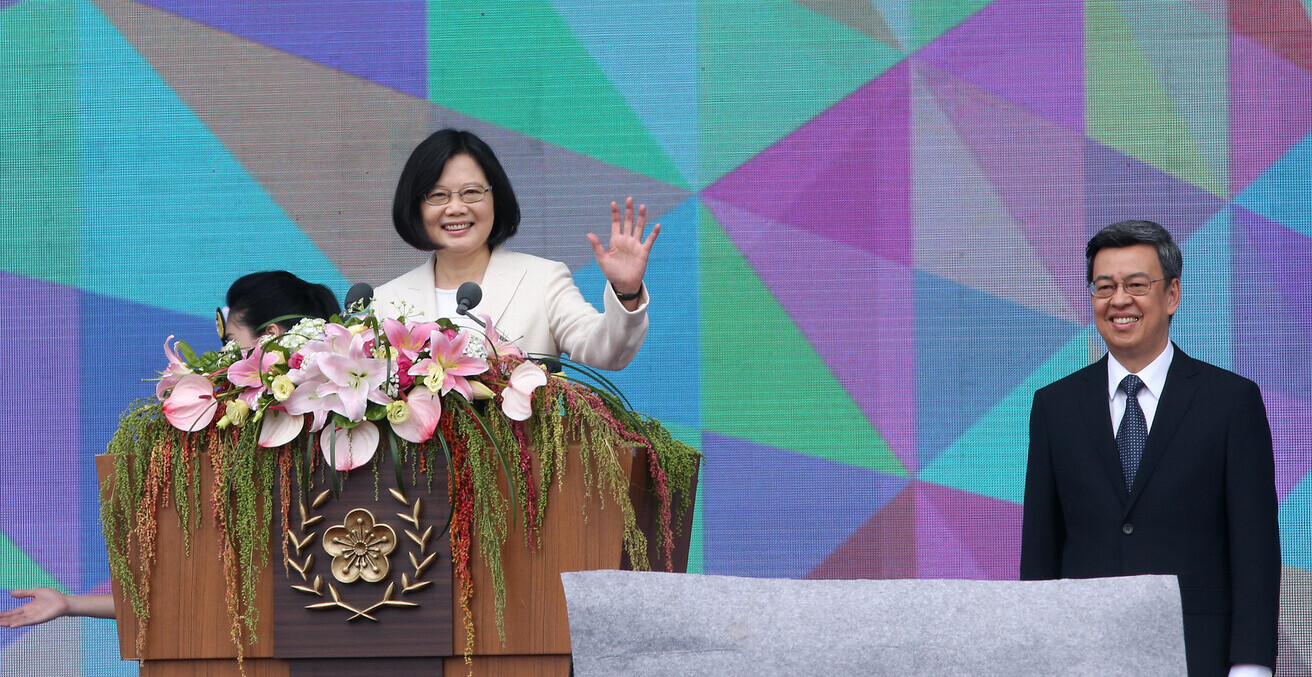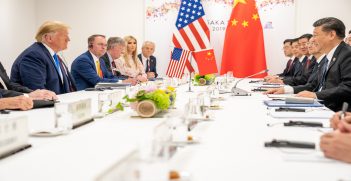An Uncertain Cross-Strait Future

Uncertainty has been rising in the cross-strait relations between mainland China and Taiwan since a structural deterioration of US-China relations. How has this affected Taiwan?
In recent years, cross-strait relations between the People’s Republic of China (PRC) and Taiwan have rapidly deteriorated. The high of the meeting between the two cross-strait leaders in 2015 was followed by a “deep-freeze” in relations just a year later, following the inauguration of Tsai Ing-wen as president of the Republic of China (Taiwan). Given President Tsai is from the pro-independence Democratic Progressive Party, whose party constitution fundamentally conflicts with the “One China Principle,” the PRC government, as led by the Chinese Communist Party (CCP), swiftly cut lines of communication. In particular, the direct phone line between Taiwan’s Mainland Affairs Council and the PRC’s Taiwan Affairs Office, established in December 2015, ceased operations following Tsai’s inauguration in May 2016. This has been a natural result of the CCP’s longstanding policy tool of positive and negative conditionality.
By using this tool, those in Taiwan who advocate for views closer to the CCP’s principles are “rewarded” through symbolic gestures of thanks as well as dialogue, economic concessions and deals, and positive coverage via PRC state media, sometimes alongside the pro-PRC Taiwanese media. However, those in Taiwan whose principles or actions conflict with the PRC are “punished,” whether they be individuals, businesses, or political parties. Furthermore, should Taiwan implement policies or promote rhetoric which significantly conflicts with the PRC’s principles, political rhetoric and economic action, such as the recent bans in fruit imports, are lobbied by the PRC directly against Taiwan.
Historically, under well-founded China-US relations, this has been an effective strategy, barring major incidents such as the 1996 Taiwan Strait Crisis. The PRC undertook a measured approach under President Hu Jintao (2002-2012), who aimed to “place the hopes of unification on the Taiwanese people.” During this period, the primacy of Taiwanese societal sentiments was emphasised, and the Taiwanese people were placated. The United States under President George W. Bush only reinforced this effectiveness, as Bush viewed the pro-independence Taiwanese President Chen Shui-bian to be more of a regional troublemaker than the PRC. In 2003, President Bush, while reaffirming America’s “One China Policy” position, remarked of President Chen’s proposal that Taiwan undertake an “independence or unification referendum” that:
We oppose any unilateral decision by either China or Taiwan to change the status quo, and the comments and actions made by the leader of Taiwan indicate that he may be willing to make decisions unilaterally, to change the status quo, which we oppose.
However, in recent years, a structural shift in China-US relations has seen seemingly irreconcilable differences emerge. As a result, the effectiveness of the PRC’s Taiwan policy has significantly diminished, particularly as these policies have remained largely unchanged due to an internal “path dependence.”
While the effects of the PRC’s continuing policies and the consequential ripples could indeed still be felt in Taiwan, this is no longer the decisive factor influencing Taiwanese politics. Rather, motivated by the increasing distrust towards China following events like the clampdown on democracy in the Hong Kong Special Administrative Region, the economic measures imposed by China have been framed by politicians as a “necessary burden” to safeguard Taiwan’s autonomy and its liberal democracy. The United States, similarly, has increasingly prioritised Taiwan in its policies, now viewing it as an integral part of US security strategy. This security has been framed by placing Taiwan within America’s first island chain, and by framing Taiwan as a symbolic beacon of democracy to be maintained against a metaphorical “arc of autocracy.” As a result, were a Taiwanese politician to be sanctioned or heavily criticised by China, they would almost immediately be able to leverage this antagonism as political capital. Domestic and international legitimacy may also be gained by virtue of them claiming their status as a pariah to the PRC, as their only political affiliations would now be with those who are similarly in favour of Taiwanese autonomy.
Overall, for China and the Chinese Communist Party, with the political stalemate and the structurally increasing negative sentiments of the Taiwanese population, the ability for the CCP to influence Taiwanese politics would now be increasing in doubt. Empirically, the trend of a rising proportion of people characterising the CCP as “unfriendly” (from around 40-60 percent in 2010-2016 to 70-75 percent in 2020-2022) is also unlikely to be overturned in the short term. This, while seemingly good news to those favouring Taiwanese independence, raises rather more ominous possibilities for Taiwan should China perceive no hope of peaceful reunification. According to Article 8 of China’s “Anti Secession Law” (2005):
… [should] possibilities for a peaceful reunification should be completely exhausted, the state shall employ non-peaceful means and other necessary measures to protect China’s sovereignty and territorial integrity.
Paradoxically, for the ROC (Taiwan) to continue to remain an independent political entity in the long term, it must continue to articulate the primacy of the territory’s people, democracy, and autonomy, while also placating the PRC by leaving open some discursive space for views more favourable to the PRC to also be heard.
Victor Ruifeng Liang is a fourth-year student at the University of Sydney, studying for a Bachelor of Arts (Politics and International Relations, International Business). He is a former intern of the AIIA, and currently works for the Australia China Business Council, the University of Sydney’s Journal of Chinese Tax and Policy, and GIR Symposium 2022.
This article is published under a Creative Commons Licence and may be republished with attribution.





